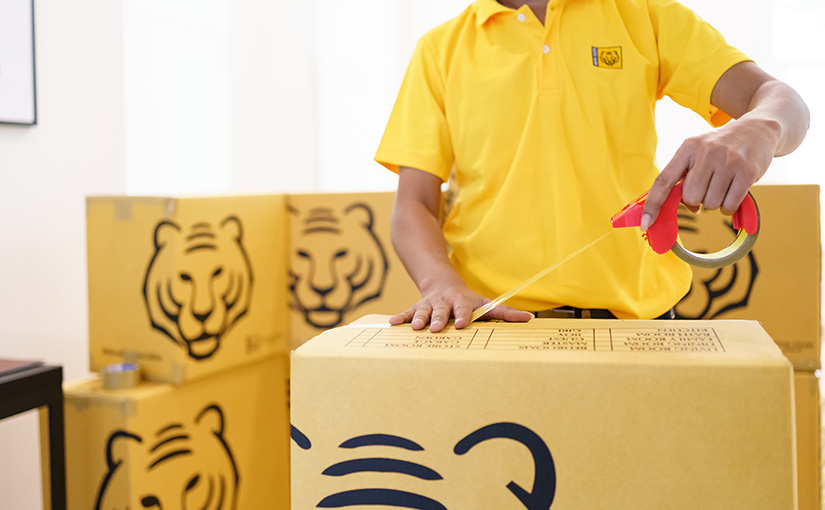How to Start Packing to Move: A Step-by-Step Guide to Get You Organized
- Asian Tigers Group
-
Home » News » Industry News » How to Start Packing to Move: A Step-by-Step Guide to Get You Organized
Actually, packing can be the most daunting part of any move, and it may go swimmingly if you approach it properly. The knowledge of how to start packing to move is actually crucial to keep everything organized and deliver all your belongings safely to your new home. Here in this step-by-step guide, you walk through everything, from gathering supplies to labeling boxes so you can deal confidently with moving.
Make a Packing Plan
Before you start packing, it’s highly imperative to have a plan. A well-thought-out packing plan will help you follow through and avoid the last-minute chaos.
- Set a Timeline: Determine when you need to be 100% packed and work backward from there to create a timeline. Give every single room enough time and stick to the schedule ideally.
- Room Priority: Prioritize which rooms need to be packed first. Mostly, the arrangement of least-used rooms like the attic, basement, or guest room comes at the beginning of the packing process, while the rooms that are highly essential like the kitchen and bedroom are left for last.
- Checklist: A packing checklist should be written based on what needs to be done. This may include decluttering, purchasing packing supplies, and arranging a moving sale or donating unneeded items to organizations that accept donations.
Find the Right Packing Supplies
Having adequate packing supplies helps you protect all of your belongings as well as make the process easier. Here are what you should need:
- Boxes: You will like to make an inventory of the boxes needed, in assorted sizes. Small boxes are ideal for heavy things like books, whereas larger boxes are better for light and bulky things like linens.
- Packing Tape: A quality packing tape permit for proper sealing. You may want to invest in a tape dispenser to speed up the process.
- Bubble Wrap and Packing Paper: Use to protect fragile items such as dishes, glassware, or electronics.
- Markers and Labels: All your boxes need to be clearly labeled with the items they contain and the room that they are supposed to be in. You can use permanent markers and labels for this purpose.
- Specialty Boxes: Purchase special boxes for your wardrobes, mirrors, or televisions. They are specially crafted with more protection for the move.
Decluttering
Take the time to get your home in order before you can begin packing. In the process of moving, this is the perfect time to get rid of things you no longer need or use.
- Sort Through Belongings: Go through each room and sort your belongings into categories: keep, donate, sell, and discard. Be ruthless in your decisions—if you haven’t used something in the past year, it’s likely time to let it go.
- Hold a Moving Sale: If you have anything at all in decent shape that you really have no use for, consider having that moving sale. It can be a win-win situation in that you can earn some extra funds most definitely and your load lightened at the same time.
- Donate to Charity: Things that are still good, but just would not sell can be donated to the nearest charity, some of which will even come to your place.
- Get Rid of Unwanted Items: Dispose of things that are either damaged or cannot be used. Check with your local waste management service for the rules regarding proper hazardous material disposal, such as paint or batteries.
Pack Non-Essential Items
When the cleaning up is finished, then begin putting all the non-essential items in boxes. The non-essential items are the things you won’t be needing before moving.
- Pack Seasonal Items: First to go are the out-of-season items, such as winter coats during summer time or holiday decorations. These can be packed and will not affect your daily routine.
- Box the Decorative Items: Other things that may be packed beforehand are artworks, framed photographs, and other decorative items. Wrap each individually to protect it from damage impending on the shift.
- Store Boxes Once Packed: After these boxes are all packed, store them in a separate area like the garage or a spare room. This step is integral to keeping everything free from clutter and easy to move after the actual moving day has arrived.
Tackle One Room at a Time
To stay organized, focus on packing one room at a time. This method helps prevent confusion and ensures that items from different rooms don’t get mixed up.
- Start with the Least-Used Rooms: Begin packing rooms that are used less frequently, such as guest rooms, storage rooms, and home offices. This way, you can maintain functionality in your main living spaces for as long as possible.
- Be Systematic: Start packing those items from each room that are rarely used, like books, ornaments, or spare bedding, leaving those that are used on a daily basis for last.
- Label Everything: Attach a label to each box packed according to what is in the box, then add the specific room where the box is supposed to go. You will find it very easy to unpack and locate each item in the right position in your new home.
Pack an Essentials Box
As the day of moving nears, prepare an essentials box containing all sorts of necessaries that will be required immediately you arrive at your new home.
- Include Daily Necessities: List items such as toiletries, a change of clothes, medications, and basic kitchen supplies such as a coffee maker and a few utensils. To this you should also add in an envelope, all your important documents and chargers, anything else you will need for the first few days of their stay.
- Accessibility of the Box: The essentials box must be easily located and not in difficult-to-reach locations. You may want to keep it in your own car and not in the mover’s car for its ready availability when needed.
Preparing for the Moving Day
As the moving day draws near, there are still some final tips that would make your move relatively secure.
- Schedule Moving with Movers: Call the schedule with professional movers, like Asian Tigers Group, about two or three days before moving. Make sure they have addresses and special instructions.
- Pack Final Things: The night before moving, pack all of the rest of your household. Packing includes the kitchenware and the bedding. Keep that essential bag apart and ready separately.
- Defrost and Clean Appliances: If you are traveling with your refrigerator or freezer, make sure that you defrost and clean it at least 24 hours before the moving day. This will make it leak-proof and not give a foul odor.
- Take Care of Final Details: Be sure everything is packed, and boxes are labeled. Walk through one final time to make sure nothing has been left behind.
Unpack and Settle In
Finally, the very last process is unpacking and settling into your new home.
- Priority Unpack Your Essentials: Open up your essentials box; this is all you will need for the first night in your new home. This will help you to feel more comfortable and less stressed.
- Setting Room Priority: Set up the main rooms. Start by setting up your kitchen, bedroom, and bathroom. This will make the new space a lot more functional and will help you settle in a lot faster.
- Set Your Own Pace: Take your time. Unpacking may overwhelm you, so take your time. You don’t have to hurry; unpack at your own pace.
Conclusion
Moving has not to be a very anxious task for anyone. The following steps on how to start packing to move will ensure you remain organized, keeping your items safe and secure until you reach your new place. Some preparation and a systematic approach are all you need for a successful move.
If you’d like to discover the latest information about the moving and relocation world, please also check other industry news from Asian Tigers Group.
Your trusted moving support is only a few clicks away from your hand. Contact the Asian Tigers office near your origin or destination for your next move. You can also check our Frequently Asked Questions resource, AI-powered by Tiger Move Bot.










